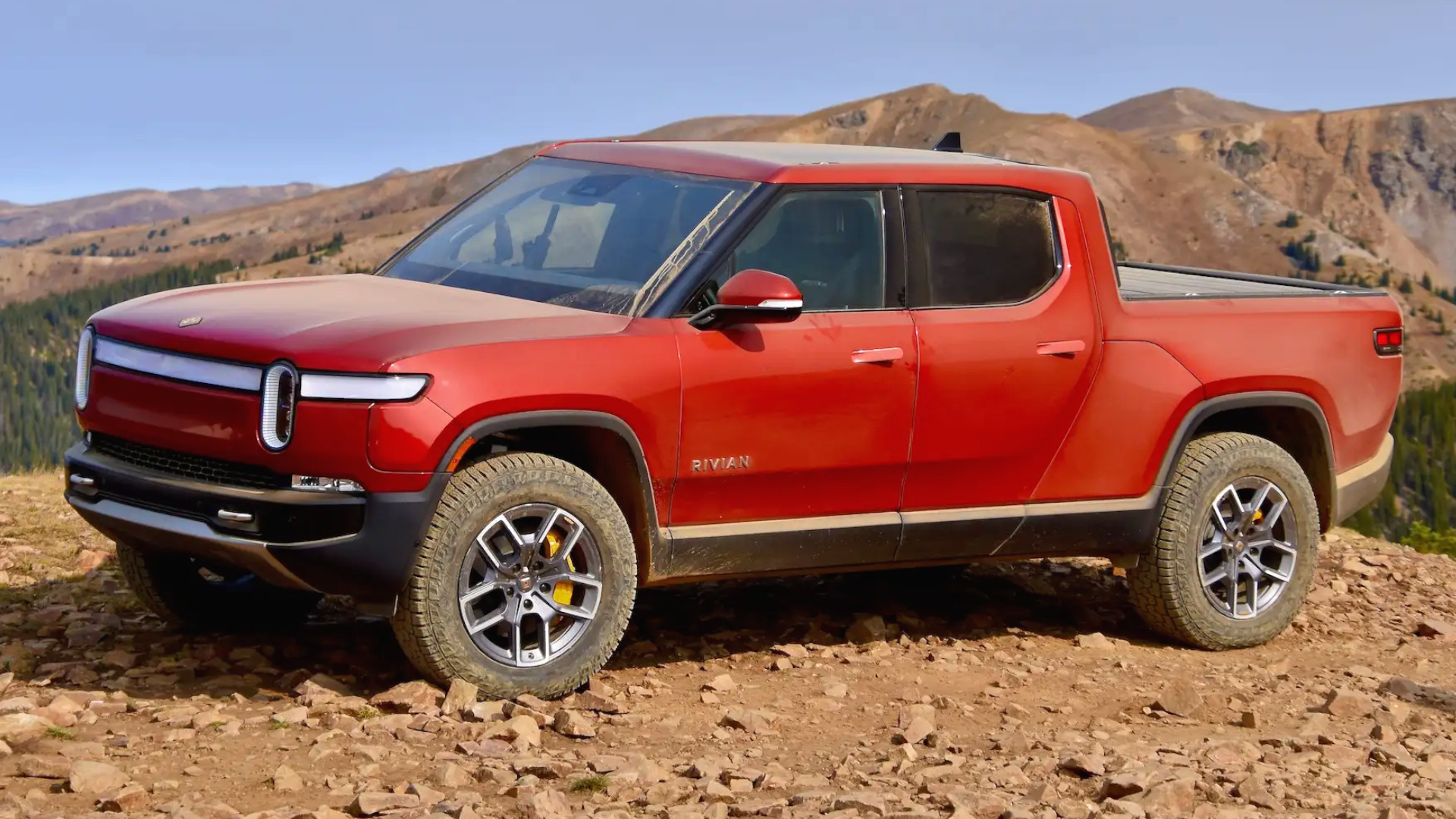

Rivian is one of many new electric car manufacturers on the scene, and one of the few that’s actually made it to the point of building production-spec vehicles. Today brought much news from the upstart company as covered by InsideEVs, with reports of new motor and battery options accompanied by news of hefty price increases.
The problem is that since Rivian first announced pricing in 2018, there has been a global pandemic along with major supply chain challenges. Since then, there’s been a roughly 37% increase in transaction prices for new vehicles, with sale prices hitting record highs last year.
Amidst these difficult trading conditions, Rivian has announced an approximately 17% price increase for its R1T, pushing the base price to around $78,975 for the original quad-motor configuration, while the R1S will go up approximately 20% to $84,000. Both of these price increases will affect existing reservations as well as new buyers, a move likely to enrage many customers that have been waiting patiently to receive their vehicles.

In an attempt to soothe the burn, lower-priced dual-motor options will now be available on both the R1T truck and R1S SUV, versus the quad-motor setup first seen on the company’s vehicles. The dual-motor vehicles will still retain all-wheel-drive, with base prices for these models sitting at $67,500 and $70,000 respectively, aligned with the original launch prices for the quad-motor versions. The aim is to let customers hang on to their reservation and purchase a Rivian truck or SUV at their original intended price, albeit at a lower spec.
Additionally, customers will have to give up the long-range battery pack originally promised with over 300 miles of range. Instead, the base-price vehicles will have the 260-mile range “Standard Park” that Rivian has just announced. If so desired, however, customers can opt for a dual-motor vehicle with either the 320-mile “Large Pack” or 400-mile “Max Pack” at additional cost.
If that wasn’t a tough enough pill to swallow, it bears noting that the Standard Range battery and dual-motor configuration isn’t yet available. Customers ordering those configurations will have to wait until deliveries begin in 2024.
The dual-motor vehicles still have stout performance; with over 600 horsepower, Rivian estimates the R1T in this spec will still do 0-60 in 4 seconds, versus 3 seconds for the quad-motor truck. Range is slightly improved as well, with the Large Pack estimated to hit 320 miles in the dual-motor truck thanks to the vehicle’s lighter weight, versus 314 miles for the original quad-motor vehicle. Towing capacity is said to be unaffected, remaining at 11,000 lbs for the dual-motor configuration.
The company also notes that the 5-seat configuration for the R1S is now unavailable. All R1S production will consist of 7-seat variants.
As seen on Rivian Forums, many customers are outraged by the changes. Some have said they are getting priced out by the changes, while others stated they will cancel their orders entirely. The thread stretches 44 pages long despite only being posted on Tuesday morning.
The Drive spoke to Sean Crawford, a customer who reserved a Rivian R1S Explore Package in November 2020. According to screenshots shared by Crawford, the quoted price has gone from $75,900 to $91,775 since the latest announcement, a rise of 20.9%. Formerly-included features like the Large Pack and quad-motor all-wheel-drive are now $6000 options respectively, while prices of accessories have also increased as well.

“I fully expected a price increase, but not that much,” said Crawford, adding that ” I wouldn’t mind giving up having 4 motors and having just two but pushing the delivery window to 2024 for that is too much.” Noting that there’s no guarantee Rivian won’t increase prices further in the meantime, Crawford also states his frustration at the changing specs coming from Rivian. “The new $6000 charge for the battery pack they’ve been advertising from the get-go is a bait and switch in my opinion,” he says.
Overall, it’s a raw deal for Rivian’s reservation holders and may shake their belief in what the company is trying to achieve. After significant delays, customers are now left with the option of accepting a lower-performance vehicle or stumping up a significant extra chunk of cash to get what they originally wanted. The dual-motor vehicles look great in isolation, but once people’s expectations have been set higher, they’ll always be disappointed with less.
“We were 100% behind the company and still in a way are, but with this amount of an increase, this just pushes this way out of our range,” said Crawford. He calls the price increase “ridiculous,” noting that it will make the vehicle far less affordable for some. “I’m all aboard the electric car revolution, but I don’t want to be misled on the way,” he says.
Rivian was obviously careful in accepting reservations, giving itself the option to modify specifications and pricing as vehicles drew closer to production. Regardless, it seems the company has burned some customers with this move, who may feel that they no longer trust the company to deliver what it promised at a reasonable price.
Got a tip? Let the author know: lewin@thedrive.com